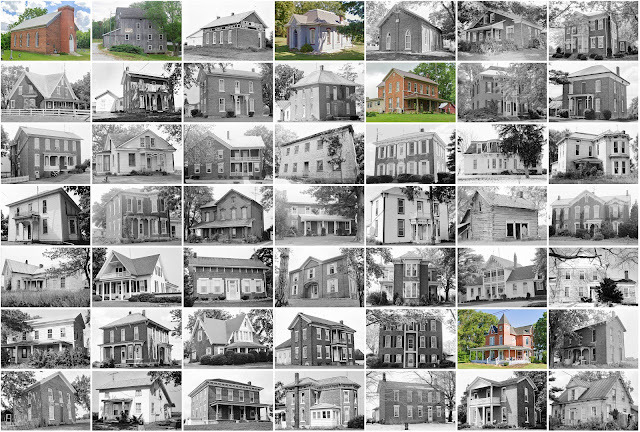Wabash County, Indiana
Founding: 1835 (declared in 1832)
Parent counties: Unorganized territory
Namesake: The Wabash River
Seat: Wabash (1835–)
Seat: Wabash (1835–)
Land area: 412 square miles
Population (2020): 30,976
Population (historic): 2,756 (1840); 17,547 (1860); 25,241 (1880); 28,235 (1900); 25,170 (1930)
Periods of population growth: pre-1840–1900; 1910s; 1930–1980
Subdivisions: One city; four towns; two CDPs; seven townships
Pre-1940 residences (estimated): 5,562 (39.2%)
Pre-1940 housing survival rate: 66.3%
Pre-1860 housing survival rate (1940): 11.8%
Pre-1940 housing survival rate: 66.3%
Pre-1860 housing survival rate (1940): 11.8%
Farm housing in disrepair (1950): 5.8%
Nonfarm housing in disrepair (1950): 9.7%
Average farmhouse value (1930): $1,621
Average outbuilding value (1930): $1,529
Average farmhouse value (1930): $1,621
Average outbuilding value (1930): $1,529
Average farmhouse size (1940): 6.9 rooms
Number of farms (1920): 2,529
Average farm size (1920): 81.4 acres
Sources of settlement: Ohio, Pennsylvania, Germany, and Virginia
Number of farms (1920): 2,529
Average farm size (1920): 81.4 acres
Sources of settlement: Ohio, Pennsylvania, Germany, and Virginia
_________________________________________________________________________________
Wabash
Namesake: The Wabash River
Founding: 1834 (platting); 1839 (post office); 1849 (incorporation)
Population (2020): 10,440
Population (historic): 966 (1850); 2,881 (1870); 8,618 (1900); 8,840 (1930)
Periods of population growth: pre-1850–1920; 1930–1970
Pre-1940 residences (estimated): 2,247 (44%)
Pre-1940 residences (estimated): 2,247 (44%)
_________________________________________________________________________________
_________________________________________________________________________________


Comments
Post a Comment